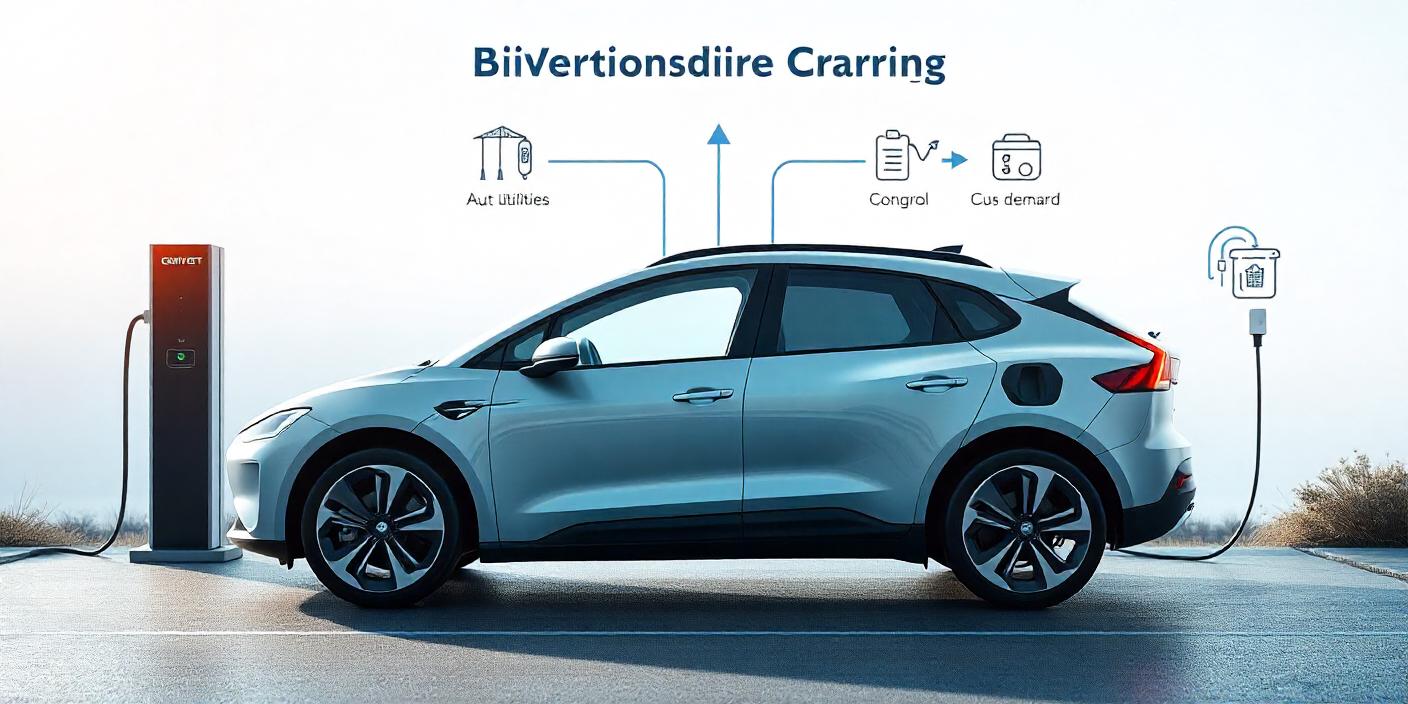Blog
The Rise of Smart Charging in Electric Vehicle Adoption

Blog
Best Long Range EVs in India 2025 – Perfect for Diwali Road Trips
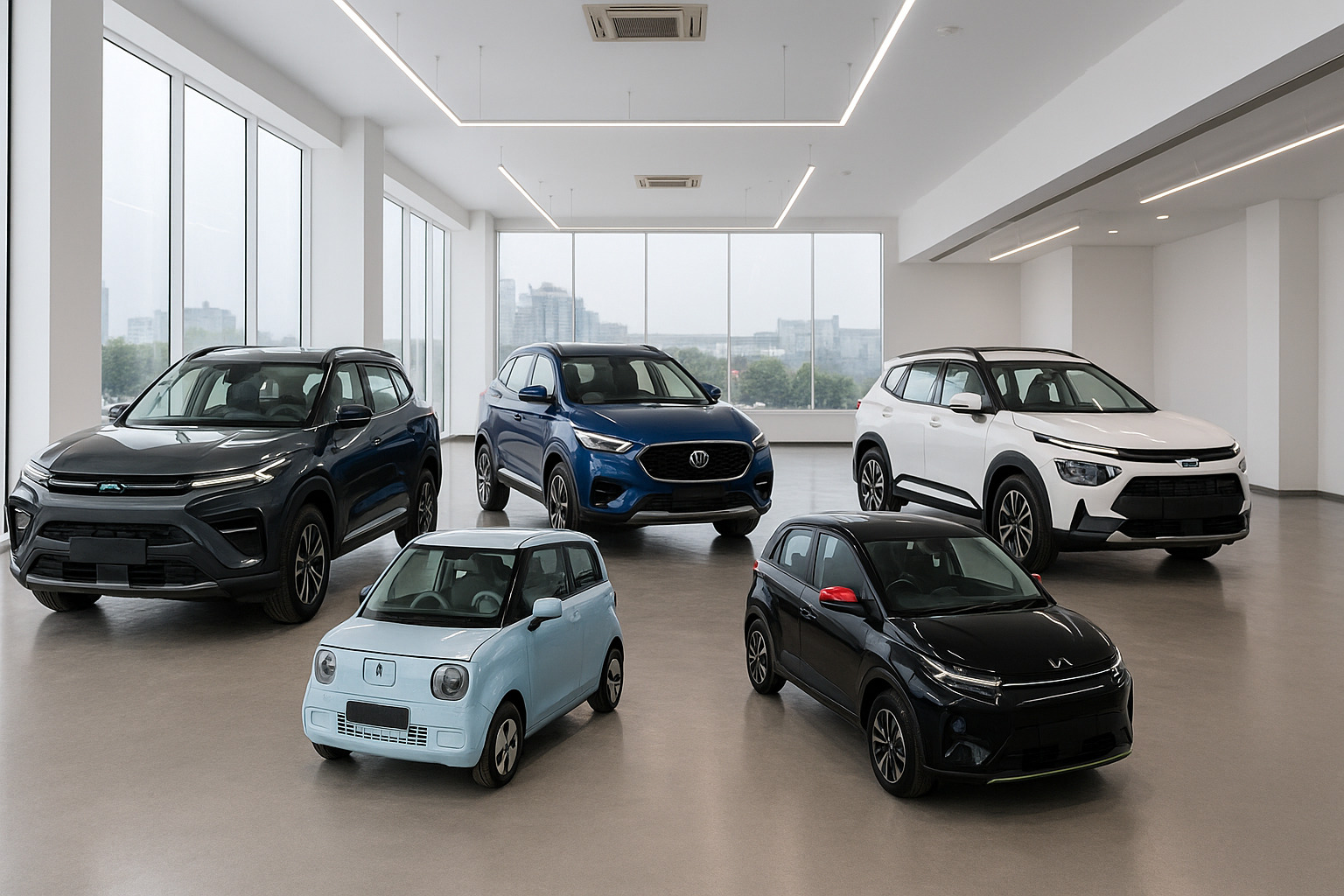
Diwali has never been a season of new beginnings – new clothes, new memories, and sometimes a new car parked outside the house. But Diwali 2025 is different. The growl of the petrol and diesel engine is gradually being replaced by the quiet whir of the electric motor. Families in India are now turning to long range EVs in India 2025, adopting cleaner, quieter, and smarter road experiences.
The electric revolution is now more than just a prophecy – it is unfolding before our eyes. From Tata and Mahindra to MG and Kia, all car manufacturers are launching high-performance electric cars that provide unbelievable mileage, rapid charging, and unparalleled comfort for long road trips. If you are scheduling your next road trip during this festive season, this article will guide you through the best long range electric vehicles in India 2025 – ideal for Diwali road trips, weekend outings, and all of the aforementioned in between.
The Real Reason Long Range EVs Are Winning Hearts
Let’s be real – no one wants to keep worrying about charging every 100 kilometers. Indian roads are long, and our festive trips usually cover multiple cities or hill stations.
That’s where electric vehicles with long range step in. Such cars combine heavy batteries, quick charging, and roomy interiors – perfect for families and road-trippers. If you’re traveling from Delhi to Jaipur or Mumbai to Lonavala, these EVs ensure that you can take in the ride, not focus on the charge level.
Tata Harrier EV – Bold, Beautiful, and Built for India
One of the most awaited launches of the year is the soon-to-be-released Tata Harrier EV. With its established EV credentials in Nexon and Tiago, now Tata is ready to dominate the premium segment.
- Range: 550–600 km per charge
- Battery Pack: 60–70 kWh (approx.)
- Charging: Fast DC – 20 to 80% charge in 30 minutes
Tata Harrier Price: Around ₹22–₹25 lakh
The Harrier EV’s edgy design, LED Daytime Running Lights, and panoramic sunroof are sure head-turners. Packed with power for highways, but smooth and silent in the city. The ultimate combination of Indian practicality and modern luxury.
Mahindra XEV 9e – The New-Age Warrior
Mahindra’s always built rugged SUVs. With the XEV 9e, it’s doing it for the electric terrain.
- Range: Roughly 450–500 km
- Battery: 60+ kWh
- Top Speed: 160 km/h
XEV 9e Mahindra Price: ₹21–₹25 lakh (expected)
This EV is packed with safety features – lane assist, a few airbags, and regenerative braking. Mahindra has designed it for Indian roads – sturdy, stable, and ready for an adventure. Perfect for the family that enjoys long drives but doesn’t have a hole to burn in its pocket.
Kia Carens Clavis EV – Family Comfort Meets Smart Design
Kia has been winning over Indian hearts since the Seltos and Sonet times. Now, its new upcoming big launch – the Kia Carens Clavis EV – aims to bring electric travel into the family fold.
- Range: 350–400 km
- Battery: 50 kWh
Kia Carens Clavis EV Price in India: ₹20–₹25 lakh (estimated)
Key Features: Luggage space 3-row seating, wireless charging, and premium infotainment system
This EV is made for long Christmas road trips – generous luggage spaces, good ride, and quiet interior compartments. It’s not a car; it’s a moving living room for Indian families.
MG Gloster EV – Where Power Meets Luxury
If you’re someone who believes a car should feel like a statement, the MG Gloster EV is the one to look at. MG has already proven itself with its EVs, but the Gloster is in a different league – built for those who love both comfort and capability.
- Range: 500+ km
- Performance: Dual motor all-wheel-drive setup
- MG Gloster Price: ₹50–₹55 lakh (expected)
Features: AI voice assistant, panoramic sunroof, ventilated seats
It’s imposing from outside. Inside, it’s serene, gentle, and un-believably spacious. For either a long Diwali trip or a short weekend excursion, the Gloster EV makes the ride feel effortless.
MG Windsor EV – Small, Elegant, and Intelligent
The MG Windsor EV promises to bring a fresh sense of sophistication to mid-segment electric vehicles in India.
- Range: Approximately 400 km
- Battery: 45–50 kWh
- MG Windsor EV Interior: Luxury soft-touch dashboard, ambient lighting, large touchscreen console
- Price: ₹15–₹18 lakh
It’s for all those who desire that MG luxury experience but in a compact and easy-to-drive form. The Windsor is new-age but homely – exactly like city users with a sense of style would adore.
Electric Car Low Price Options – For Everyday Indians
Not everyone needs a massive SUV. Some just need an affordable EV for daily use. That is where the affordable electric car low price segment comes in – headed by the likes of the Tata Tiago EV and MG Comet EV.
- Range: 250–300 km per charge
- Price: Starts around ₹8.7 lakh
- Best For: Daily workday office commutes, shopping errands, and city traffic
They’re small, affordable, and easy to charge from home – perfect for young professionals or first-time buyers of EVs.
Charging: The Real Game-Changer
A couple of years ago, people were reluctant to buy EVs because charging points were scarce. That is no longer the case. Fast-charging stations can now be found along highways, shopping malls, and housing estates.
You can charge your EV at home overnight or charge up to 80% in less than an hour with DC fast chargers. With this growing infrastructure, road travel over long distances has never been easier.
Why Using Electricity for Diwali 2025 Is the Best Choice
This year, automakers are offering free home chargers and EMIs with no down payment, as is customary during Diwali. Furthermore, government subsidies further reduce the cost of owning an EV.
Going electric this Diwali has a symbolic meaning that goes beyond offers. You’re making India greener, quieter, and cleaner in addition to improving your vehicle.
Final Thoughts
Electric vehicles are no longer the future; they’re now. The extensive range EVs in India 2025 selection demonstrates that sustainability is not only possible but could also be fashionable, powerful, and comfortable.
From the tough Tata Harrier EV, to the loaded Mahindra XEV 9e, or the premium MG Gloster EV, every single one of them here offers more than mere mileage – it offers meaning.
And for families, the Kia Carens Clavis EV and MG Windsor EV get the comfort vs. range equation just right. Even the affordable low-price EVs demonstrate just how within reach the electric revolution is.
This Diwali, let your vehicle whisper, not roar. Let your drive be cleaner, quieter, and smarter – because the road ahead is electric.
People Also Ask About Long Range EVs in India 2025
Q.1.What is the top long range EV in India 2025 for families?
A.1.The Kia Carens Clavis EV is the top family-friendly long range EV in India 2025, with 3-row seating, a range of 400 km, and contemporary comfort features – ideal for festive road trips.
Q.2.What is the price of the Tata Harrier EV in India?
A.2. The Tata Harrier EV should cost between ₹22 lakh and ₹25 lakh (ex-showroom). It’s designed for power, range (up to 600 km), and long-distance comfort.
Q.3.How much will the Mahindra XEV 9e be priced at?
A.3.The XEV 9e Mahindra price should range around ₹21 lakh and could reach up to ₹25 lakh, depending on the model. It features a rugged design with a 450–500 km range.
Q.4.Kia Carens Clavis EV cost in India:
A.4.The Kia Carens Clavis EV will probably be priced between ₹20–₹25 lakh, with premium features, family space, and a driving range of 350–400 km.
Q.5.Which EV provides the longest range in India 2025?
A.5.Presently, the Tata Harrier EV and MG Gloster EV are at the top, providing more than 500–600 km on a single charge, so they are ideal for highway and long-distance driving.
Blog
Top Electric Cars in India Under ₹5 Lakhs – Budget-Friendly EVs for Diwali 2025
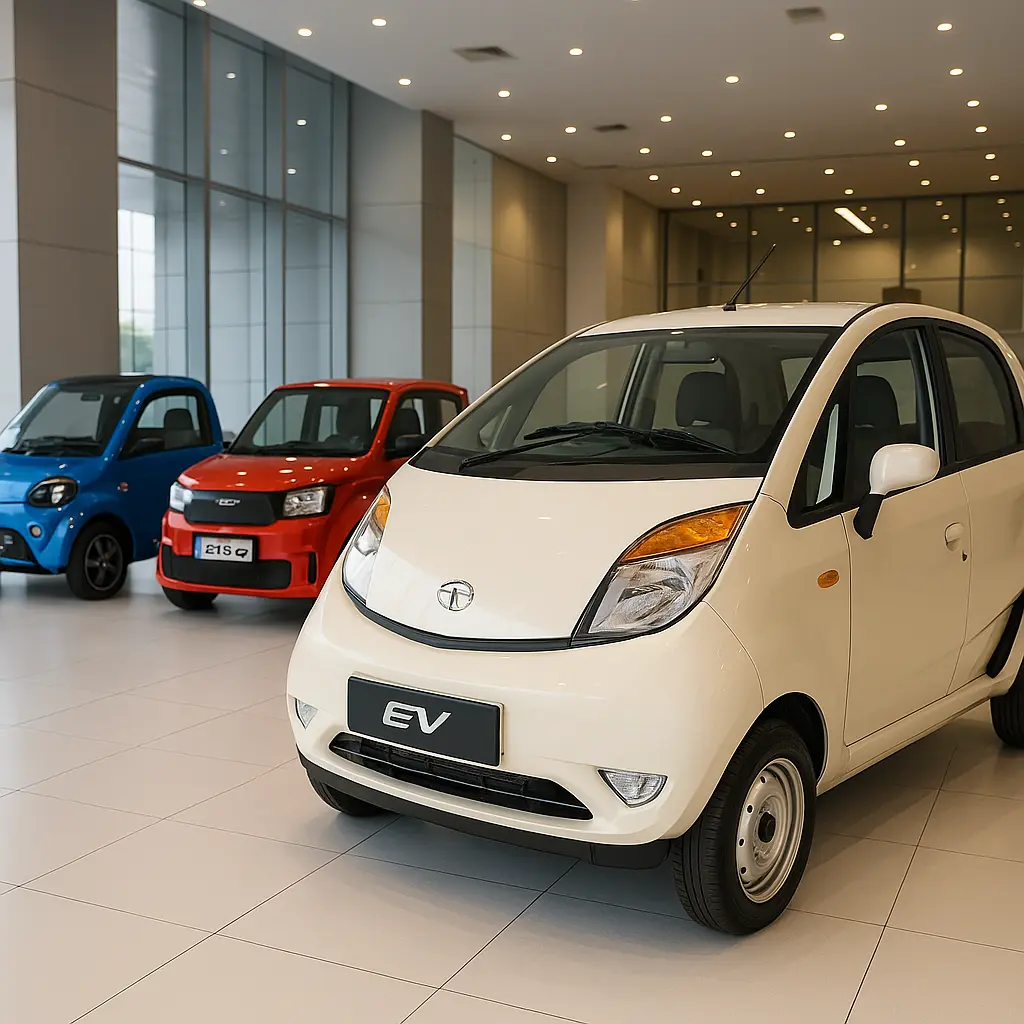
Every Diwali brings a big purchase to many Indian households. In 2025, that “shagun” is eerily silent-no roar of an engine, but the whine of a motor. With petrol over the century mark in all metros and parking Each Diwali is a season of new beginnings for Indian households – a time when grand buys seem all the more special. For 2025, the excitement is not about petrol or diesel motors but electric vehicles in India below ₹5 lakhs. With fuel prices breaching the ₹100 barrier in metro cities and green living becoming a common issue, first-time buyers are increasingly looking towards affordable EVs.Electric cars in India under ₹5 lakhs are quickly becoming the top choice for buyers this Diwali 2025, as families look for affordable and eco-friendly mobility options.
What was considered futuristic is now realities. From nifty city runabouts like the Strom Motors R3 to cutting-edge micro-EVs like the PMV EaS-E, producers are redefining affordability on wheels. These affordable electric vehicles are not only affordable on the pocket – they’re silent, frugal, and ideal for daily urban commutes.
rarer by the month, many first-buyers are wondering themselves one simple question: Is it possible to purchase an electric car in India for under ₹5 lakhs?
The shortlist that really works
Strom Motors R3: built for the city, not the highway
The Strom Motors R3 does not attempt to be more than what it is. It’s a small, walled three-wheeler which does fit into places your aging hatchback wouldn’t even consider. A claimed 200 km per charge, an 80 km/h top end, and a ~₹4.5 lakh price point make it one of the very few EVs that actually fall within the five-lakh mark. Inside, there’s a 7-inch screen, GPS tracking, climate control and keyless entry. Charge it at home; in about three hours you’re set for the next couple of days of errands. For solo commuters or two-person runs to the office, it just works.
PMV EaS-E: the micro-EV that feels surprisingly complete
Mumbai-based PMV shot for the sweet spot and landed close. The EaS-E is a two-seater with enough tech to feel modern-dual airbags, rear camera, anti-theft alerts, phone connectivity-and a price that keeps spreadsheets happy (₹4.79 lakh). Depending on the pack, expect 120–200 km on a charge and 70 km/h up top. Plug into a regular socket and it’s usually done in 4–5 hours. If your life is office–home–market within city limits, this is the kind of EV you forget and simply use.
Tata Nano EV (expected): the icon, unplugged
If there is one name that can bring more families into EVs, it is Nano. Tata’s electric renewal is highly awaited in the ₹4–₹4.5 lakh segment with a 17 kWh battery, 200–300 km range band and 4-hour 0–80% charging. Add to this a digital cluster and a small touchscreen and you have the all-too-familiar “small car for India,” without the fuel costs. It is not yet on dealership floors, but it is worth watching this festive quarter.
Mahindra Reva i (e2o): India’s first city EV, now a smart used buy
Pre-hype and pre-hashtags was the Reva. Clean used vehicles in the second-hand market can be had for ₹3.7–₹4 lakh. Specs are modest-80–120 km range, 65 km/h top speed, a 48V pack-but short city commutes still make it a clean solution. Power steering, a digital dashboard and even Bluetooth audio render it less Spartan than its retro cred would suggest. If you’d like to experience EV life on the cheap, few options are simpler.
A passing reference to the ones just below ₹5 lakh
MG Comet EV: small outside, surprisingly roomy inside
Yes, the MG Comet EV price in India starts higher (₹7.98–₹9.98 lakh ex-showroom), but it excelled city comfort. You get a neat twin-screen layout, wireless Android Auto/Apple CarPlay, two airbags and a 17.3 kWh battery which should deliver about 230 km in light city driving. It takes about seven hours to charge with a home AC charger. If you can stretch the budget, it is the most “car-like” experience in subcompact EVs.
Tata Harrier EV: family muscle for highways with long range
Not a five-lakh car-certainly not-but people still inquire about India 2025 long range EVs. Tata Harrier EV range will top out at 600 km with fast DC charging (20–80% in about 30 minutes). Expect AWD on higher trims, big touchscreen and base Tata safety gear. If budget allows, this is the “no-range-anxiety” road.
Kia Carens Clavis EV: space first, price second
The upcoming Kia Carens Clavis EV is gunning for families that actually use three rows. Rumor early on mentions a 50 kWh battery, 350–400 km range, and a price segment of ₹20–₹25 lakh. If school runs, suitcases and grandparents are part of your daily script, this is the EV MPV for you.
MG Gloster EV: the luxury long-distance runner
For those that want all-room, range and road presence, the MG Gloster EV is the word. Expect 500+ km per charge, a twin-motor AWD kit and the kind of feature list that’s more catalogue than luxury car brochure. The cost will be worth it accordingly (think ₹50–₹55 lakh), but if your odometer shows highway miles, this is totally sensible.
What to keep in mind before you book
- Be honest about your usage. 12–18 km one-way? Micro-EVs are perfect.
- Charging is homework. Can you charge at office or home? Then ownership is painless.
- Subsidies do help. FAME-II and state incentives can shove an EV below a psychological price floor during Diwali sales.
- Range vs habit. Urban users hardly require 300+ km. What you require is good charging and a sane claimed range.
Why Diwali 2025 is a good time to switch to electric
They save their top sales pitches for October–November: exchange advantages, long warranties, zero-down EMI deals, sometimes even a complimentary home charger. Couple that with the difference in running cost-about ₹1–₹1.5 per km for electricity versus ₹6–₹7 for petrol-and you’re talking about ₹50,000–₹70,000 saved annually if you travel around 10,000 km. Add in cleaner air and the quiet glide through traffic, and the switch becomes less of a risk, more of a no-brainer.
Quick responses to what everyone is wondering
Q.1 .What are the top electric cars in India that can be bought for less than ₹5 lakhs right now?
A.1. Start with the Strom Motors R3 and PMV EaS-E. Keep an eye out for the Tata Nano EV. If secondhand is acceptable, a maintained Mahindra Reva i is still a good city device.
Q.2.What is the cost of the MG Comet EV in India?
A.2. Ex-showroom prices would typically range between ₹7.98 lakh and ₹9.98 lakh. You get a compact footprint, a premium-feeling cabin and an outright city range of about 230 km back.
Q.3.What range will Tata Harrier EV offer?
A.3 .Tata is targeting up to 600 km on a full tank on some models, with rapid DC top-ups getting you from 20–80% in about half an hour.
Q.4.What is the estimated Kia Carens Clavis EV price?
A.4.Initial reports placed it at ₹20–₹25 lakh. The temptation is space and comfort-nice family EV, not city pod.
Q.5.What Is the MG Gloster EV good for highway driving?
A.5.Yes. With 500+ km estimated range and twin-motor AWD, it’s straight up aimed at highway usage and big families.
A simple Diwali takeaway
If much of your driving consists of urban miles and you’re able to charge at home, an EV like Strom R3 or PMV EaS-E will cover 90 percent of your driving for a tenth of your former fuel bill. Want the home hatchback experience? Ask for the MG Comet EV. Need real highway legs and space? That’s Harrier EV, Carens Clavis EV, or Gloster EV territory.
Blog
Best Electric Bikes to Buy This Dhanteras 2025 – Price & Festive Offers

With Dhanteras 2025 approaching, many Indians are preparing to purchase something new and significant. This time, the theme is electric mobility. The Best Electric Bikes to Get These Dhanteras 2025 aren’t merely for show or speed; they’re a logical move toward cleaner and cheaper transportation. With increasing gas prices and the growing concern for the environment, electric bikes are soon becoming every holiday shopper’s best present. Companies such as Ola, Ather, and Bajaj have released special Diwali offers and EMI schemes that make switching to an electric bike easier than ever. This guide will assist you in selecting the perfect electric bike for you this holiday if you’re interested in a change of ride. It will assist you in establishing the appropriate balance of power, price, and purpose.
The Indian market for electric two-wheelers is growing at a never-before pace. With improved charging points, improved battery ranges, and good festival season discounts, this Dhanteras 2025 may be the time when it is best to bid adieu to petrol and hello to tomorrow.
Ola Electric Scooter – Celebratory Power Encounters Style
Among the top electric scooters in India, the Ola Electric scooter remains the undisputed leader. Ola has introduced festive festive offers this October – zero-down-payment finance and special exchange bonuses.
Top Features:
- Range: 195 km/charge
- Top Speed: 116 km/h
- Price Band: ₹1.2–1.5 Lakhs (ex-showroom)
- Festive Offer: ₹10,000 instant discount + warranty extension
Ola S1 Pro Gen 2 is not only a scooter, but a statement of performance.Whether it be the workplace or Diwali shopping, its elegant look and effortless pickup make it a perfect Diwali sidekick.
Ather 450 Apex: Intelligent, Elegant, and Reliable
The Ather Electric scoote is a highly intelligent, yet dependable electric scooter worth looking at if you happen to need a new one
Quick Specs
- Range: 155 km/charge
- Top Speed: 100 km/h
- Ather Electric Scooter on Road Price: Around ₹1.6 Lakhs (Delhi)
- Festive Offer: Free fast charger + cashback up to ₹5,000
With Ather’s fast charging network expanding in major Indian cities, charging anxiety is a thing of the past. Its ride and its sleek look make it a perfect option for young professionals and youth alike.
Ultraviolette F77 – India’s Performance Powerhouse
The Ultraviolette F77 is not only an electric bike, but it is speed and green-friendliness in a single car. This made-in-India motorcycle is for performance lovers without causing any damage to the environment.
Quick Specs
- Range: 300+ km/charge
- Max Speed: 150 km/h
- Price: ₹3.8 – ₹4.5 Lakhs
Festive Offer: Loyalty bonus + free insurance
Its confrontational attitude, gen-next connectivity, and direct torque drive make it the top-rated electric bike in India 2025 for someone who requires a dose of adventure.
Bajaj Chetak Urbane – Classic Legacy, Modern Tech
For someone who enjoys a blend of nostalgia with newness, the Bajaj Chetak Electric is your safest option. Its metallic finish and sturdy frame takes you back in time but with a green conscience.
Quick Specs
- Range: 120–130 km/charge
- Top Speed: 73 km/h
- Price: ₹1.2 Lakhs onwards
- Festive Offer: ₹7,000 festive cashback + free helmet
The Chetak continues to be one of the best-selling scooters in metro cities and continues to set urban electric mobility standards.
TVS iQube ST – The Daily Electric Champion
TVS has developed one of India’s most reliable EV ranges silently. The iQube ST provides price, practicality, and comfort – the ideal daily commuter this festive season
Quick Specs
- Range: 145 km/charge
- Top Speed: 82 km/h
- Price: ₹1.3 Lakhs
Festive Offer: ₹5,000 exchange bonus + extended warranty
It’s the go-to option for anyone who wants to enjoy the blend of performance and pricing without having to sacrifice quality or design.
Festive Price Watch – Electric Scooter Price in India 2025
| Model | Range | Price (₹) | Ideal For |
| Ola S1 Pro Gen 2 | 195 km | 1.3 Lakh | Tech lovers |
| Ather 450 Apex | 155 km | 1.6 Lakh | Smart commuters |
| Ultraviolette F77 | 307 km | 4.5 Lakh | Speed enthusiasts |
| Bajaj Chetak | 120 km | 1.2 Lakh | Family users |
| TVS iQube ST | 145 km | 1.3 Lakh | Daily riders |
Best Electric Bikes to Buy This Dhanteras 2025
Ola, Ather, and Bajaj are bringing in fierce promotions this season. EVs are priced lower than ever before with government incentives and lower EMI schemes.
And, electricity rates are constant compared to petrol prices fluctuating – so your running cost will decrease to a paltry ₹0.25 per km.
This Dhanteras, you’re not just buying a vehicle; you’re investing in a cleaner and smarter future.
Why These Are the Best Electric Bikes for Festive Season
When India is celebrating Dhanteras 2025, the very concept of wealth is transforming. No longer is it gold or silver – it’s doing it smartly, being eco-friendly. Be it Ola Electric scooter for city runs or Ultraviolette F77 for pure performance, all of these are an embodiment of cleverness and stinginess.
Take home an electric scooter in India 2025 that reflects your taste, imbued with the promise of a greener tomorrow.
“This Dhanteras, charge your dreams, not your fuel tank.”
Ready to Bring Home Your Dream EV This Dhanteras
All Set for Ride into the Future This Dhanteras?
Honor not affluence, but prudence. Choose Innovation, Sustainability, and Performance with the Best Electric Bikes to Buy This Dhanteras 2025.
Visit your local Ola, Ather, Bajaj, or TVS outlet today and discover limited-season festivity deals, simple EMI schemes, and exchange incentives.
Make Dhanteras count -switch to electric and brighten up your ride, not your statement of accounts.
Dhanteras EV FAQs – All You Need to Know Before You Buy
Q1. What is the best electric bike out for purchase on Dhanteras 2025?
A.1 .The Ola S1 Pro Gen 2 and Ather 450 Apex have headed the list of Best Electric Bikes to Purchase This Dhanteras 2025 due to their mileage, reliability, and festival season offers. For maximum power and performance, the Ultraviolette F77 is a suitable choice.
Q2. Is there a special discount on electric scooters for India 2025?
A.2. In fact, all leading companies like Ather, TVS, Bajaj, Ola, etc., are offering Dhanteras 2025 festivaloffers such as a cashback of ₹10,000, zero-down-payment on EMI, and accessories on.
Q3. What is the longest range currently available electric scooter available in India?
A.3 .The Ultraviolette F77 provides the highest range provided on Indian market e-bikes — more than 300 km on a full charge, which is sufficient for both inter-city commuting and long-distance touring.
Q4. What is the average cost of Indian electric bikes for the year 2025?
A.4. The price of the electric scooter in India for the year 2025 is around ₹1.2 Lakhs for scooters like the Bajaj Chetak to ₹4.5 Lakhs for luxury scooters like the Ultraviolette F77.
Q5. Dhanteras is the best time for buying an electric bike in India, why? Dhanteras is auspicious A.5 for new buys, and EV companies unveil their largest deals around this occasion. Special festive offers and increasing awareness, Dhanteras 2025 is the ideal occasion to own an Electric Bike and step towards a greener lifestyle.
-
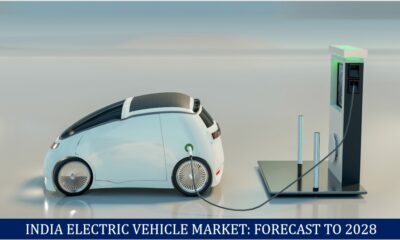
 Blog10 months ago
Blog10 months agoIndia’s Electric Vehicle Market Forecast to 2028 A Rapidly Growing Industry
-
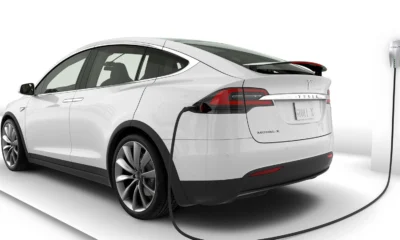
 Blog1 year ago
Blog1 year agoTop 10 Electric Vehicles of 2024: A Comprehensive Guide
-
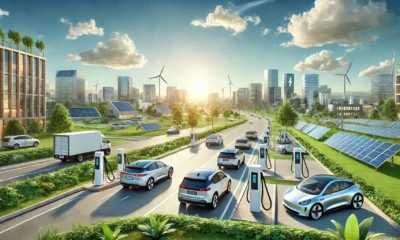
 Blog1 year ago
Blog1 year agoImpact of Electric Vehicles on the Environment and Pollution
-
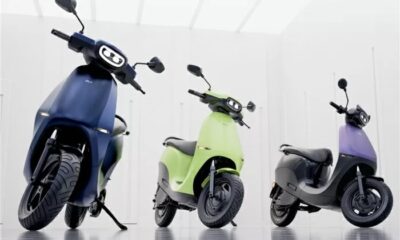
 EV news1 year ago
EV news1 year agoOla Electric Offers Massive Festive Discounts on Scooters Starting at ₹50,000
-
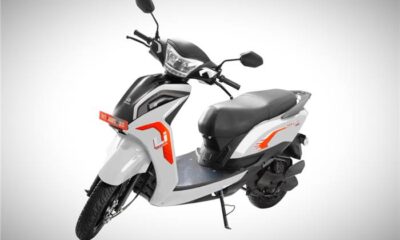
 EV news9 months ago
EV news9 months agoAmpere Magnus Neo Another Time of Electric Portability
-
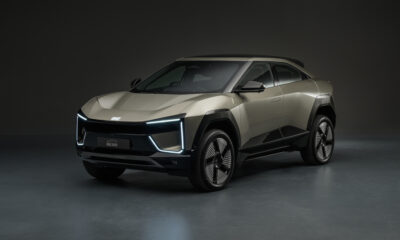
 Blog9 months ago
Blog9 months agoMahindra BE 6 An Intense Move toward the Fate of Electric Versatility
-

 EV news9 months ago
EV news9 months ago2025 Might Be the Time of EVs in India, Drove by SUV Dispatches
-
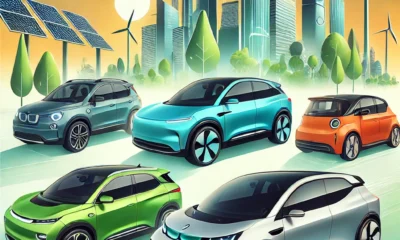
 Blog1 year ago
Blog1 year agoTop 5 best electric vehicles Under $30,000: Affordable Choices for 2024

